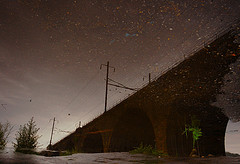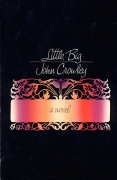 M—— often reproves me for a habit she finds reprehensible: reading while in the bathroom. I shall not be moved. The mind can be engaged even as Nature is answered.
M—— often reproves me for a habit she finds reprehensible: reading while in the bathroom. I shall not be moved. The mind can be engaged even as Nature is answered.
Most modern American houses draw the functions of their rooms from a strictly limited palette: the kitchen for cooking and eating, the bedroom for sleeping, the bathroom for ablutions and elimination. Most residences cannot support a library, a room strictly for reading. And why should they? Some of us feel no compunction about reading while eating, while in bed, while in the bath, and (dare I add) while on the toilet. Neurotic mysophobia aside, why not?
After our return from an evening excursion to the local independent bookstore, M—— was aghast when I did not refrain from taking a newly-purchased volume with me for perusal. In my defense, I pointed her to Junichiro Tanizaki’s essay In Praise of Shadows. One must move beyond the automatic cultural associations of the toilet with all that is unclean, unspeakable, and unthinkable.
The parlor may have its charms, but the Japanese toilet truly is a place of spiritual repose. It always stands apart from the main building, at the end of a corridor, in a grove fragrant with leaves and moss. No words can describe that sensation as one sits in the dim light, basking in the faint glow reflected from the shoji, lost in meditation or gazing out at the garden. The novelist Natsume Soseki counted his morning trips to the toilet a great pleasure, “a physiological delight” he called it. And surely there could be no better place to savor this pleasure than a Japanese toilet where, surrounded by tranquil walls and finely grained wood, one looks out upon blue skies and green leaves.
As I have said there are certain prerequisites: a degree of dimness, absolute cleanliness, and quiet so complete one can hear the hum of a mosquito. I love to listen from such a toilet to the sound of softly falling rain, especially if it is a toilet of the Kanto region, with its long, narrow windows at floor level; there one can listen with a sense of intimacy to the raindrops falling from the eaves and the trees, seeping into the earth as they wash over the base of a stone lantern and freshen the moss about the stepping stones. And the toilet is the perfect place to listen to the chirping of insects or the song of the birds, to view the moon, or to enjoy any of those poignant moments that mark the change of the seasons. Here, I suspect, is where haiku poets over the ages have come by a great many of their ideas. Indeed one could with some justice claim that of all the elements of Japanese architecture, the toilet is the most aesthetic. Our forebears, making poetry of everything in their lives, transformed what by rights should be the most unsanitary room in the house into a place of unsurpassed elegance, replete with fond associations with the beauties of nature. Compared to Westerners who regard the toilet as utterly unclean and avoid even the mention of it in polite conversation, we are far more sensible and certainly in better taste.
Now, I have to mention that during the time I lived in Tokyo, most of the traditional-style toilets I encountered were not exemplars of absolute cleanliness, nor were they surrounded by the contemplative silence of nature. One would be extremely unlikely to encounter one of Tanizaki’s wooden “morning glory” urinals, filled with cedar boughs and allowing “not the slightest sound.” At the other end of the spectrum, in a private home I encountered a high-tech suupaa toire of the sort with electronically-controllable, integrated bidet. The soft, heated seat was certainly much more suited to a pleasant experience than the Western wooden or plastic oblong.
Henry Alford, writing for the New York Times, considered the history of reading in the loo (quote lifted from Bibliobibuli):
In the mid-18th century, Lord Chesterfield wrote that he knew “a gentleman who was so good a manager of his time that he would not even lose that small portion of it which the call of nature obliged him to pass in the necessary-house; but gradually went through all the Latin poets, in those moments.” . . . Most scholars contend that bathroom reading is largely a modern pursuit: the chamber pots and outhouses in use prior to the 1920’s and 30’s were not ideal for perusing texts. Yet Roman baths contained libraries wherein one could pore over scrolls, and “The Life of St. Gregory” (1296-1359) recommends the isolated retreat of the medieval fortress toilet — located high up in towers, close to heaven, so as to offset the perceived baseness of the act being committed — as a place for uninterrupted reading.
Cogitation and reflection need not cease when we visit the bathroom; reading and contemplation should be woven through the fabric of our lives.
(Image of Meiji-era wooden squat toilet courtesy Wikipedia.)
 (Never fear, part 2 of “
(Never fear, part 2 of “
 It’s been eighteen years since the publication of that auxiliary tome of
It’s been eighteen years since the publication of that auxiliary tome of  Over my last few lunches I’ve been reading Hollow Earth, by David Standish. It’s a nice overview, tracing the the idea of habitable lands inside the Earth from Edmund Halley through modern fiction. I was particularly pleased by this passage on Giacomo Casanova’s Icosameron, a peculiar utopian tale published in 1788. I quote Standish’s description:
Over my last few lunches I’ve been reading Hollow Earth, by David Standish. It’s a nice overview, tracing the the idea of habitable lands inside the Earth from Edmund Halley through modern fiction. I was particularly pleased by this passage on Giacomo Casanova’s Icosameron, a peculiar utopian tale published in 1788. I quote Standish’s description:
